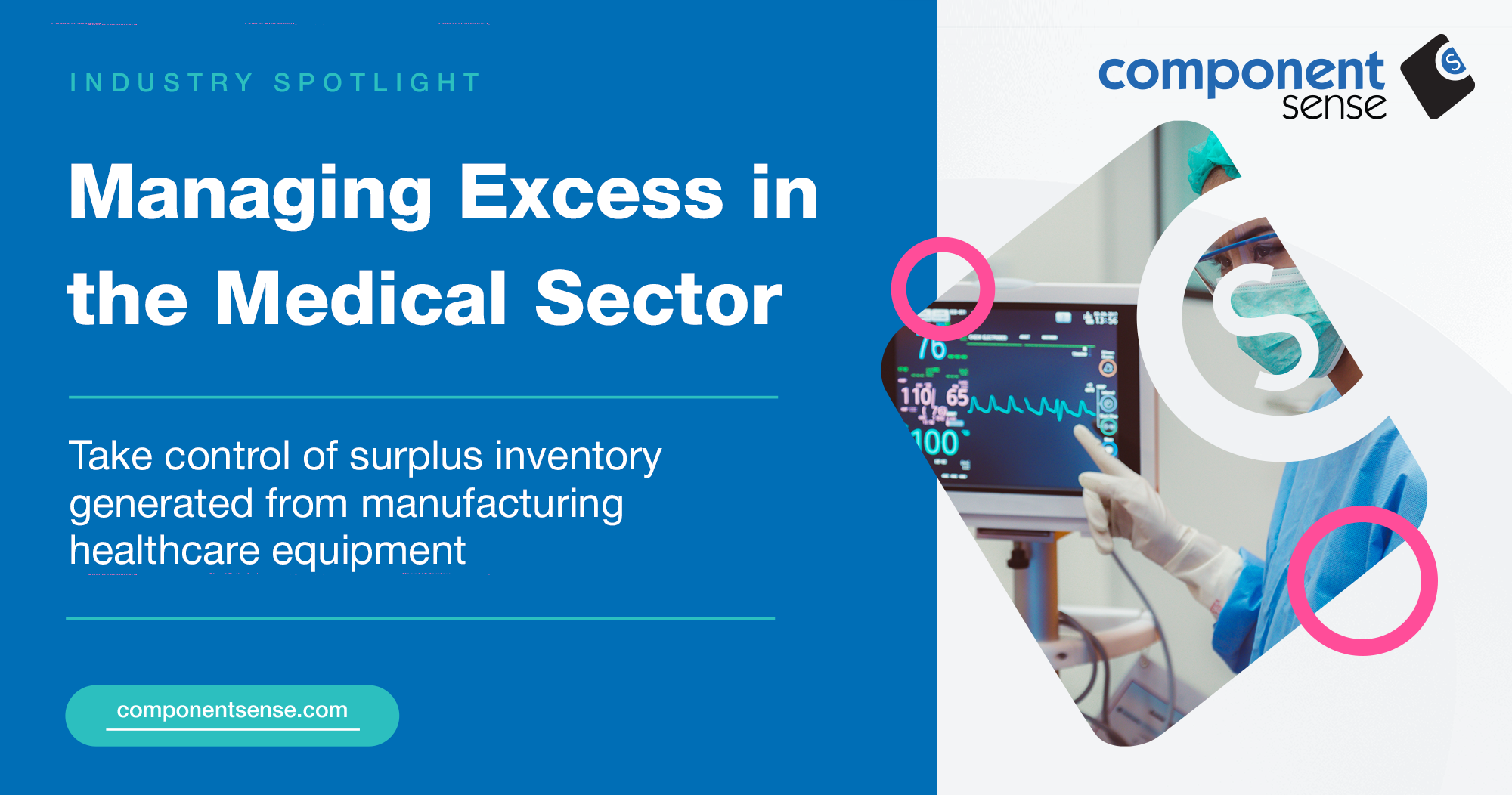Industry Spotlight: Managing Excess in the Medical Sector

It is fair to say civilisation has advanced significantly in treating injuries and medical conditions.
While discoveries of new drugs and treatments are pivotal in treating patients, so too are recent advancements in medical technology. Significant innovations and increasingly complex surgeries drive the need for intricate electronic devices.
As in the military sector, electronics in the medical industry face intense scrutiny for reliability and safety; after all, someone's life could depend on it. High standards also mean electronic manufacturers in the medical sector face costly challenges. These include often long product lifecycles and a rapidly changing market, which lead to increased excess and obsolete (E&O) component stock levels.
This spotlight will explore the dynamic medical electronics supply chain and solutions for managing surplus inventory.
The evolution of electronics in the medical sector
Passive and active components on complex printed circuit boards (PCBs) are vital in ensuring medical devices are both functional and reliable. Components carry out tasks like power regulation, signal processing, and memory functions. Many of these semiconductor-equipped pieces of equipment, are used for diagnosing, preventing, and treating life-threatening health conditions. Common tools like patient monitors, ultrasound machines, and MRI machines all rely on electronics.
Recent external factors have accelerated innovation and digitisation in the medical sector. The COVID-19 pandemic spurred advancements in digital health solutions for remote patient treatment. AI technologies now drive how the industry processes data and predicts future events.

The U.S. FDA approved 124 novel medical devices in 2023, up from 84 in 2022. Recently, innovations such as medical implants, diagnostic equipment, and wearable health monitors have revolutionised the industry. An ageing population drive the need for complex PCBs in medical devices.
Progress in the medical electronics supply chain
Complex electronics require intricate supply chains with thousands of global touchpoints. The medical industry relies heavily on specific suppliers and manufacturers due to stringent regulations (more on them soon).
The global medical electronics market was valued at 7.7 billion USD in 2023. Despite this size, participants in health system supply chains still have targets regarding efficiency and waste. A medical wearable company with a revenue of 1 billion USD can be estimated to have approximately 100 million USD worth of excess stock. With over 23 years of exclusive experience in dealing with excess and obsolete (E&O) inventory, Component Sense is well-equipped to read market conditions and assist our clients.
Like other industries, medical equipment manufacturers face supply chain disruptions from geopolitical unrest and environmental volatility.
Today, manufacturers seek ways to ensure quality from trusted distributors, source materials sustainably, diversify their supply chain across multiple countries, and operate with agility and minimal excess inventory. A more efficient and resilient supply chain ultimately leads to cheaper, better healthcare for the public.

Regulatory considerations in the medical industry
It’s simple: people's lives and well-being depend on the reliability of medical devices. As such, healthcare equipment manufacturers face meticulous regulations and tests to ensure device safety and functionality. This scrutiny extends to the electronic components used.
Rules and regulations for electronic manufacturing in the medical sector vary globally, making it more complex for engineers and designers to stay compliant. Many regulations require comprehensive testing and detailed documentation to ensure reliability and safety.
Prominent regulations across the world include:
- ISO 13486 Certification, which is widely followed around the world
- FDA Regulations in the USA
- CE Marking for compliance with MDR (Medical Devices Regulation) in the EU
Component Sense assists electronic manufacturers in the medical field with managing excess or providing quality inventory. However, it is vital to consult legal counsel to ensure full compliance with all laws and regulations in your jurisdiction.

Excess and obsolete inventory in the medical sector
Given the often extended lifecycle of many medical devices, manufacturers overcompensate and stockpile components to ensure continuous production throughout a device's lifespan. A key issue with this approach is that OEMs producing medical devices are often bound by standards that ensure they —or their EMS/CMS — only use components that are under two years old. Thus, if manufacturers are buying a 5-10 year supply of parts, they cannot use the stock past this two-year threshold.
An overly cautious approach, combined with the complexity of the healthcare supply chain and regulatory pressure, often leads to poor inventory management and high levels of excess and obsolete (E&O) stock.
Underutilisation and over-forecasting of stock create significant financial risks and unnecessary e-waste. Balancing preparedness and minimising surplus inventory has driven trends in adopting strategies like Enterprise Resource Planning (ERP) systems to streamline operations.
Contract manufacturing (CMS) is also gaining popularity in the medical sector. CMSs handle production, sourcing, and inventory risks, allowing OEMs to focus on research and development. However, contract manufacturing often incurs added costs, as OEMs still own the inventory, even though it is held by the contract manufacturing service (CMS). Holding fees, typically 1-2% of the stock's cost, generally insure inventory against theft and other risks.
Manage your medical component inventory with Component Sense
Pandemic disruptions and growing sustainability pressures force the medical device industry to strategise for a more resilient supply chain. Redistributing E&O stock is crucial to achieve these goals.
Component Sense helps electronic manufacturers worldwide redistribute surplus inventory. Long-term solutions like our InPlant™ system deliver 100% cost recovery, and even significant positive PPV (purchase price variance) from their E&O. For companies that wish to retain ownership of their stock whilst it is stored locally, our consignment solution is the perfect solution.
Component Sense also offers an Outright Purchase option for quick sales, allowing us to bid for your stock within 24 hours of receiving your inventory list. If accepted, we can uplift your stock within 48 hours, free of charge.
Operational efficiency, sustainability, and cost-saving motivate better E&O stock management in the medical sector. Less financial overheads allow for continued innovation, research and development. Ultimately, an optimised supply chain leads to better healthcare for all.